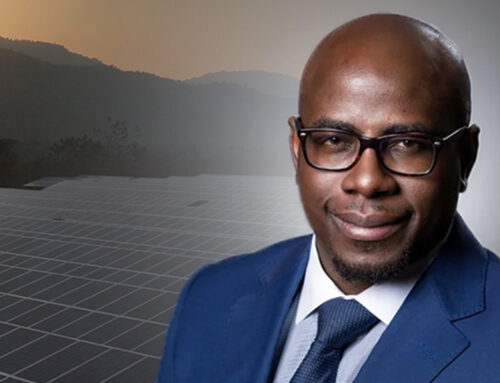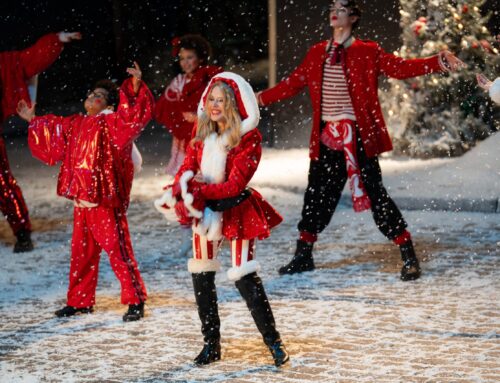What the film Conclave gets right (and wrong) about electing a new pope
April 24, 2025
Conclave movie: How accurate is it, ahead of the election for Pope Francis’s successor?
Smear campaigns, politicking, gossip and blackmail: Conclave had it all.
The film about the death of a fictional pope and the election of a new papal leader was an awards-season favourite.
And now, as Catholics around the globe mourn the death of Pope Francis, that election process begins in the real world too.
“I had grown up in a Catholic family [and] uncles of mine work as Catholic priests and theologians,” Conclave’s lead actor, Ralph Fiennes, told the ABC.
“So my instinctive thing was, ‘Please, please can we get this right? Can the details be accurate?'”
And as life imitates art in the weeks to come, the film will act as a reference point for many of us outside the secretive process.
We sat down with Darius von Guttner Sporzynski, a historian and the dean of the Australian Catholic University’s Canberra campus, to see if Fiennes got his wish.
What happens when the pope dies?
In Conclave, we follow Fiennes’ character, Cardinal Lawrence, in the aftermath of a fictitious pope’s death.
When a pope passes away or resigns, a ‘vacancy of the Apostolic See’ is declared. The rules around what happens next are set out in Vatican legislation, updated by Pope John Paul II in 1996.
Professor von Guttner Sporzynski says the film mirrors this legislation “almost to the letter”.
Nine days of mourning follow the death, cardinals arrive at the Vatican from around the world, and the conclave — the meeting central to the election process for the new pope — must begin within 20 days.
Fiennes’ Cardinal Lawrence is a fictional Dean of the College of Cardinals, the person who must oversee the conclave.
The current real-life dean is Giovanni Battista Re; however, the 91-year-old will not be able to run the conclave, as participation is restricted to cardinals under 80.
With the vice dean (Cardinal Leonardo Sandri) also over 80, the running of the conclave usually falls to the most senior eligible cardinal bishop, Cardinal Pietro Parolin.
What Pope Francis has revealed about the conclave
Much of the film centres on factional tensions and smear campaigns among the cardinals, who have differing views on the future of the church.
Professor von Guttner Sporzynski says just how much this has been dramatised for entertainment is up for debate.
“There are no written minutes that are given to us to suggest how these meetings unfold,” he says.
For him, the film excels in showing the human side of a deeply spiritual process, where cardinals have their own likes, dislikes, ideologies, flaws and vices.
Pope Francis himself (then Jorge Bergoglio) revealed a group of cardinals “used” him in the 2005 conclave in an attempt to block the election of Cardinal Joseph Ratzinger.
In his book The Successor, the late Pope said he received 40 out of 115 votes, but the intention wasn’t to elect him. Instead, the group aimed to prevent a ‘foreign’ pope, hoping to force a compromise candidate after knocking the German Cardinal Ratzinger out of the running.
Raised in Argentina but ethnically Italian, Pope Francis announced he would refuse the role, and Cardinal Ratzinger was elected as Pope Benedict XVI.
The Vatican and the Santa Marta residence
In Conclave, like in the real world, cardinals are sequestered to the Vatican throughout the election, so they are not unduly influenced by the outside world.
The Vatican is, however, off limits to any and all film and television production.
Filming was therefore limited to historic buildings across Rome, but cast members were given an exclusive tour of the Sistine Chapel.
“We went to the Vatican and got to see a little bit behind the scenes, what most people would not normally be able to see,” actor Stanley Tucci told The Screen Show’s Jason Di Rosso.
“That alone is impressive. I mean, the Sistine Chapel is, of course, an extraordinary thing, and to have access to it the way we did … was great.”
Fiennes says it was important to the whole cast and crew to be as precise as possible.
“We did have a religious adviser on set every day to make sure that [with] even the simplest things of our deportment, [like] how we held our prayer hands … we got the details right.
“I’m sure there’ll be people saying we got this wrong and that wrong, but there was definitely a strong effort to be accurate in terms of the religious details in the film.”
The conclave’s meaning and significance
As Professor von Guttner Sporzynski explains, the conclave is a secret ballot reminiscent of the leadership elections we have across the globe.
“There’s a paper ballot with a handwritten name of a candidate on it … [and] there’s scrutineers,” just like on our own election nights.
But as Conclave’s director, Edward Berger, pointed out on The Screen Show, it’s also “basically [the] most secretive election process in the world”.
In the film, the scrutineers pierce the ballots with a needle and red thread after they’ve been counted, binding them together and adding to the drama.
“In the past, the death of a pope was confirmed by … knocking a tiny silver hammer into the forehead of the deceased,” Professor von Guttner Sporzynski says.
“That used to be the tradition. We don’t do this anymore; medical practitioners now confirm the person is dead.
“Do they [still] use the thread to do the needle thing? I don’t know. Maybe yes, maybe not. But it looks very good in the movie.”
He says cardinals cast two ballots each morning and two each afternoon, until a consensus of two-thirds majority is reached.
Smoke from the Sistine Chapel’s chimney is still the first notification the public have about the conclave’s results.
Black smoke means a failed vote, while white smoke signals there is a new pope.
Professor von Guttner Sporzynski says originally this was achieved by burning the ballots themselves, with the addition of wet straw to create white smoke.
These days, as in the film, the colours are achieved with chemicals.
“Essentially, Pope John Paul II put all these new rules in the [Vatican] legislation because he participated in two conclaves and he understood that the old rules were slightly too cumbersome,” Professor von Guttner Sporzynski explains.
He says these practical, logistical concerns find a balance with spirituality in the conclave process.
“Catholics believe it is inspired by the higher power and like [they say] in the movie: If there was no mystery, there wouldn’t be a need for faith.”
Conclave is streaming in Australia (to rent or buy) on Prime Video, Apple TV, Google TV or YouTube.
Search
RECENT PRESS RELEASES
Goldman Sachs, Bank of America invest in Texas Stock Exchange By Investing.com
SWI Editorial Staff2025-12-15T04:55:52-08:00December 15, 2025|
The Magnificent 7 isn’t that magnificent: 5 of them have underperformed the market this ye
SWI Editorial Staff2025-12-15T04:55:00-08:00December 15, 2025|
Why BofA are buyers of weakness in this sector By Investing.com
SWI Editorial Staff2025-12-15T04:54:10-08:00December 15, 2025|
The Smartest Vanguard ETF to Buy With $1,000 Right Now
SWI Editorial Staff2025-12-15T04:53:36-08:00December 15, 2025|
Oracle Shares Have Plunged. Should Investors Buy the Dip Heading Into 2026?
SWI Editorial Staff2025-12-15T04:53:06-08:00December 15, 2025|
ChatGPT Predicts Bitcoin, Ethereum, and Solana Prices for 2026 as Market Eyes Recovery
SWI Editorial Staff2025-12-15T04:49:23-08:00December 15, 2025|
Related Post




